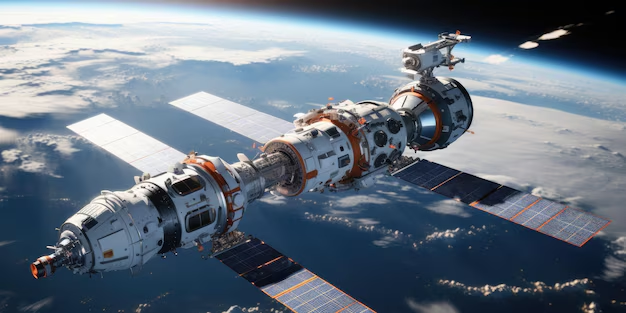World’s First AI-Controlled Space Station Goes Live: A New Era in Orbital Exploration Begins

What Just Happened?
In a groundbreaking achievement for science and engineering, NASA and the European Space Agency (ESA) have jointly launched and activated the world’s first AI-controlled orbital research station, named AURORA.
Unlike the International Space Station (ISS), AURORA does not require full-time astronauts onboard. It’s the first fully autonomous space station, controlled, maintained, and operated by an onboard artificial intelligence system with robotic support units.
AURORA went live on June 21, 2025, and is now orbiting Earth at an altitude of 480 kilometers.
What Makes AURORA Different?
AURORA stands for: Autonomous Unit for Robotic Orbital Research and Analysis.
Here’s what sets it apart:
- No permanent human crew. It's designed to function independently for up to 24 months at a time.
- AI Core “Argus” manages energy, experiment schedules, hardware maintenance, docking protocols, and communications.
- Four robotic arms handle physical tasks, including equipment repairs and module upgrades.
- Reconfigurable labs allow AURORA to switch between biology, materials science, and climate experiments remotely.
Its systems are powered by high-efficiency solar arrays and backed by a nuclear microreactor for emergency energy.
Why Is This Important?
AURORA represents a new model for space exploration:
- Cost Efficiency
Human space missions require billions in life-support systems, training, risk planning, and return logistics. AURORA can run at a fraction of that cost.
- 24/7 Operations
The station never sleeps. Its AI operates continuously, optimizing every minute of orbit for scientific gain.
- Reduced Risk
Dangerous or volatile experiments can now be conducted without putting human lives at risk.
- Scalable Design
AURORA modules can be duplicated or upgraded quickly, making it easier to expand orbital research in the future.
What Will It Be Used For?
In its first 12-month cycle, AURORA will:
- Conduct zero-gravity drug trials for cancer treatment
- Analyze atmospheric data to study extreme weather patterns
- Test new materials for space construction
- Run AI-vs-human experiment planning comparisons
- Serve as a remote hub for deep-space mission rehearsals
All experiments are coordinated remotely by mission teams at Johnson Space Center (USA) and ESTEC (Netherlands).
Can Humans Still Visit?
Yes, while AURORA is built for autonomy, it includes a compact human habitat for up to 3 short-term astronauts at a time. This allows for inspection missions, emergency overrides, or specialized manual research.
Docking bays are compatible with SpaceX Dragon, Orion, and ESA’s new Hermes capsule.
How Smart Is the AI?
The AI core, called Argus, is based on a multi-modal learning system trained on past space operations, lab data, and real-time Earth analytics.
Key abilities include:
- Reallocating resources based on experimental outcomes
- Predicting component failure and initiating repairs
- Communicating with Earth in both technical and natural language
- Generating scientific summaries and anomaly reports autonomously
A fail-safe system ensures all major decisions are logged and can be overridden by human controllers if needed.
What About Security?
Space experts have emphasized robust safety features:
- Redundant backups for all major AI decisions
- Physical access controls (robotic or human)
- Earth-side manual override at all times
- Encrypted communications and quantum signal relays
NASA has also published a transparency report detailing how AURORA’s AI adheres to ethical limits and prioritizes mission goals over autonomous decision-making freedom.
What Comes Next?
Both NASA and ESA plan to use AURORA as a model for:
- Future deep-space labs near the Moon or Mars
- Autonomous orbital greenhouses
- AI-managed supply stations for crewed missions
There’s even a plan to deploy a twin version called AURORA-II near Lagrange Point L1 by 2027, serving as a continuous monitor for solar storms and radiation bursts.
What You Should Know
- AURORA is the first fully AI-managed orbital science station
- It operates without a permanent crew, using robotics and advanced automation
- It reduces mission costs, increases safety, and enables round-the-clock research
- It's part of a broader move toward smarter, more scalable space infrastructure
The Bottom Line
The launch of AURORA isn’t just a milestone in space hardware. It’s a signal of where we’re headed: a future where machines and AI expand human exploration without risking human life.
It may be orbiting alone for now, but AURORA might be the blueprint for how we live, build, and discover in space for the next century.